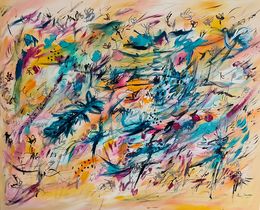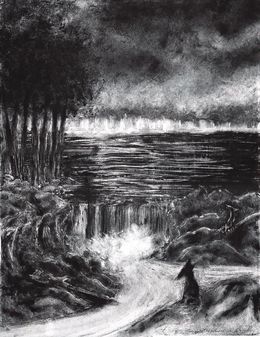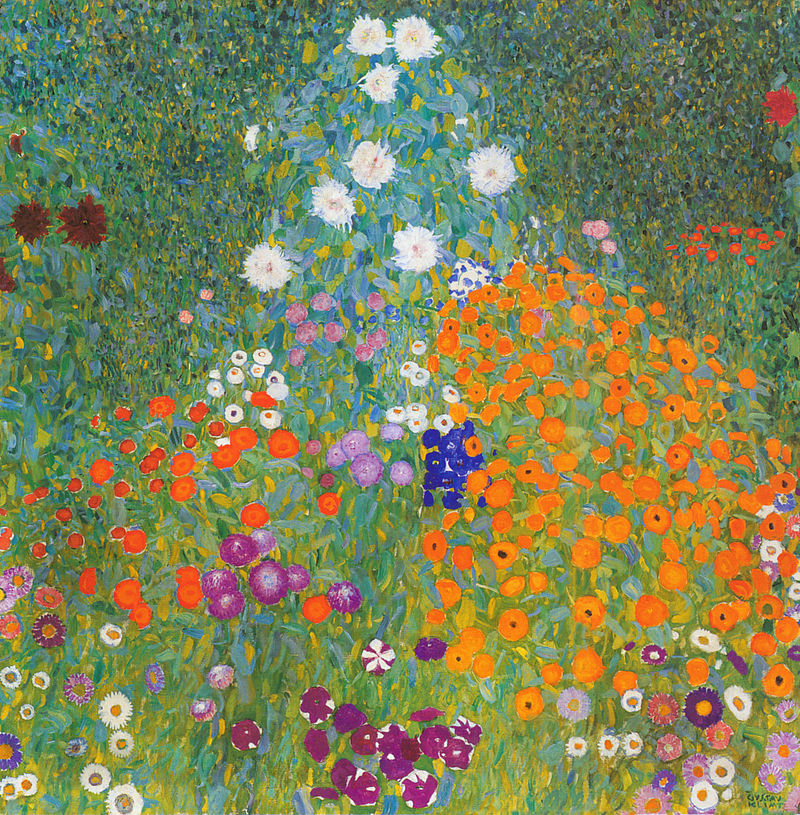
The 8 Most Famous Flower Artworks

As a symbol of fertility, rejuvenation and reproduction, flowers have filled the canon of art history since time began. From early cave drawings to biblical scenes interpreting Eden as a natural paradise, flora and fauna have been depicted in art for as long as humans have existed. Over the centuries, artists have captured the rich symbolism of flowers, tracing the changing meanings of roses, irises, tulips, carnations, and many more. Their importance in the western artistic canon cannot be understated. In fact, some of the world’s most famous paintings are of flowers such as Van Gogh’s Sunflowers or Monet’s Waterlilies. Depending on the context, a single flower can represent a multitude of meanings. This ranges from fertility or decay, purity or promiscuity, love or hardship. As well as their rich symbolism, flowers have attracted artists by means of their diverse color palettes.
Like bees to the pollen of a flower, humans have flocked to the alluring sweet visual nectar that exists as botanical art. A blossoms’ objective beauty in attracting humans no doubt derives from a flower’s harmonious colors, soft curves, and symmetrical forms. From depictions of the Dutch Golden age to modern day floral sculpture, here we have selected the 8 of the most famous flower artworks we think you should know. This roundup of famous flower paintings offers the botanical highlights of Western art featuring artists who have used flowers as both subject and material.
1. The Golden Age of Dutch bulbs

When we think of famous flower paintings, the Dutch master of still life Ambrosius Bosschaert the Elder springs to mind. Bosschaert (1573 – 1621) started painting within the Dutch Golden Age. This was a period in the Netherlands, roughly spanning the 17th century, in which Dutch trade, science, military, and art were among the most acclaimed in the world. Bosschaert was one of the first artists in history to focus on still life painting. He began a tradition of painting detailed bouquets of tulips and roses. He focused on scientific accuracy, though the flowers still contained symbolic and religious meanings. Thanks to the booming 17th-century Dutch art market, he became highly successful. The artist rarely varied his compositions and three motifs remained common: flowers in a vase, on a table or in a window sill.
2. Blooming botanical illustrations
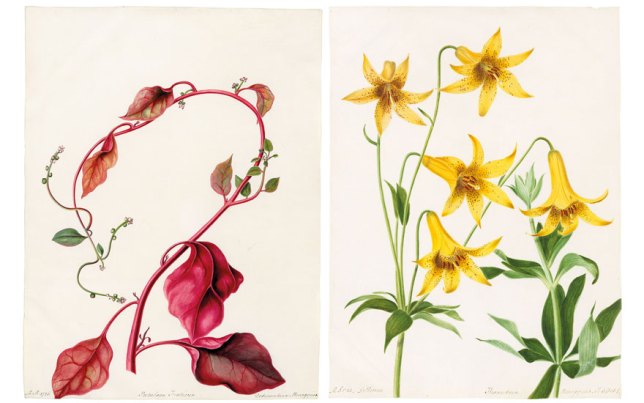
Botanical illustration has a history of over 2000 years, the first known examples being Greek physician Krateus’ scientific depictions of plants. Although they remained popular all through the Middle Ages and the Renaissance, botanical drawings reached their peak in the 18th and 19th centuries. Explorers like Pierre Joseph Redouté and Sir Joseph Banks recorded plants around the world using this practice. At the same time, advances in printmaking allowed their findings of unseen buds to be studied and taken back home.
Botanical illustrators portrayed the ideal version of every plant, erasing any leaf holes or petal folds. (Rather like the idolized rose we see in the fairytale of Beauty and the Beast). To do so, they studied example after example of the same floral species, before combining their findings together into one archetypal, idealized drawing. They would then take apart the plants to expose their inner compositions and examen them under a microscope. These explorations informed both art and science. In fact, the botanical illustrator Franz Bauer became credited with the first description of a cell nucleus in his study of orchids from 1802.
3. Scientific documentation by cyanotype
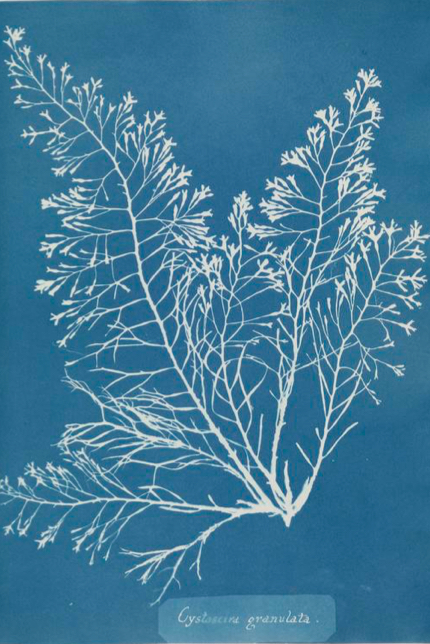
Anna Atkins was an English botanist and photographer. She is often considered the first person to publish a book illustrated with photographic images. Atkins adopted the cyanotype process, which produces a blue print. She used this process to produce prints of algae and various types of plants. Using a contact printing method, she would “place the unmounted dried-algae original directly on the cyanotype paper.”
This image of the algae Cystoseira granulata is taken from Photographs of British Algae: Cyanotype Impressions (1843-1853). The book took Atkins a decade to prepare and publish and is dedicated what she describes as the “flowers of the sea”.
4. The strawberry patch of William Morris’ textiles

William Morris (1834-1896) was an English textile designer and was a major contributor to the revival of traditional British textile arts during a period referred to as the ‘Arts & Crafts’ movement. His famous flower designs were often based on natural forms. Perhaps his most famous print and figurehead pattern of the ‘Arts & Crafts’ movement, Strawberry Thief continues to have an enduring legacy in today’s world, notably in the fashion and design industries. This design demonstrates Morris’ eye for repeated patterns and symmetry in soft hues.
5. Georgia O’Keeffe’s famous flowers

Artist Georgia O’Keeffe was inspired by her natural surroundings to create dozens or series of paintings dedicated to one, specific flower. As a keen gardener, It’s said she became interested in the brilliant colors and billowing petals of canna lilies when she visited Lake George, New York in 1918. Her famous flower paintings began with watercolor depictions of these vibrant subjects before O’Keeffe progressed onto abstract, close-up images in oil. These painting epitomize the artist’s modernist style which has become much imitated in the last century. Often described as erotic, O’Keeffe’s famous flower paintings experiment with color and texture. She uses shades of red, yellow and orange to magnifying the hibiscus’ textures, sweeping lines, and plump shapes.
6. Pop flowers by Andy Warhol

Andy Warhol’s series, Flowers, is made up of ten screen prints. He based this series upon photographs taken by Patricia Caulfield featured in the June 1964 issue of Modern Photography magazine. Warhol leaves his signature mark on the photographs by flattening them and adding bright, vibrant colors. This print, created in 1964, came about through the use of acrylic and silkscreen ink on linen.
7. Technicolor flowers by Takashi Murakami

This list of famous artworks would not be complete without a look at the modern takes on the subject by 21st century artist Takashi Murakami. A Japanese artist, Murakami is perhaps best known for his floral motifs, smiling faces, and anime-inspired flowers.
Murakami’s art encompasses a wide range of media and is generally described as superflat. His work incorporates visual elements from Japanese culture, blending the historical and the contemporary, and is characterized by bright flat colors and satirical, often childlike content. Some of the most commonly recurring motifs in his work are flowers, mushrooms, skulls, and Buddhist motifs. Furthermore, Takashi’s flowers have joined the metaverse in his release of the NFT “Murakami.Flowers” in 2020.
8. The living artwork: Jeff Koons’ Puppy

Puppy is a large-scale sculpture by artist Jeff Koons and currently stands guard at the Guggenheim Museum Bilbao.
Koons is known for challenging the hierarchy between popular culture and the elitist art world. In this work, he references traditional 18th-century garden design while incorporating contemporary elements such as computer modeling. This juxtaposition between new and old, grandiosity of scale with the simplicity of the subject matter is what Koons does best in his humorous take on modern art.
Here you have it—our 8 famous flower artworks! Feeling inspired by all the floral art? Why not discover other artists on Artsper who’ve used fabulous flora in their works?

About Artsper
Founded in 2013, Artsper is an online marketplace for contemporary art. Partnering with 1,800 professional art galleries around the world, it makes discovering and acquiring art accessible to all.
Learn more